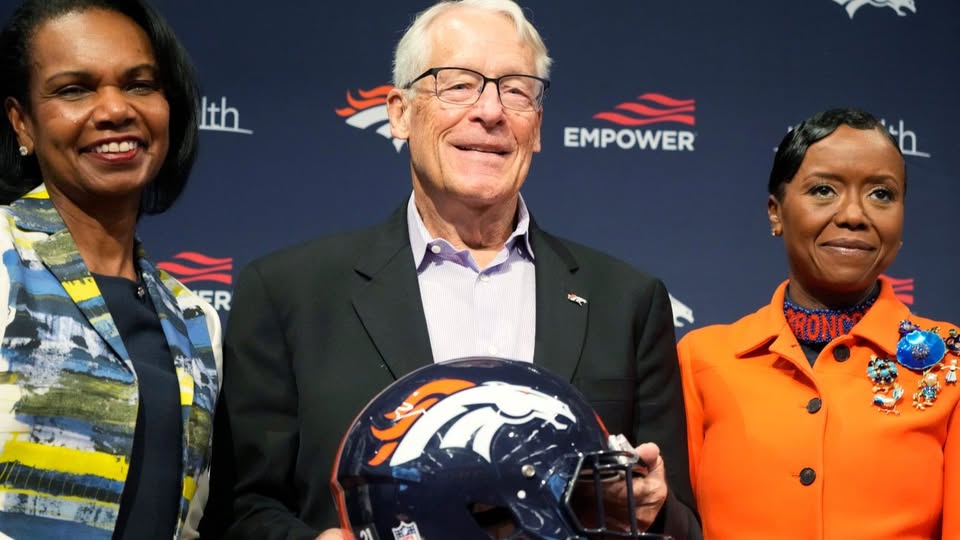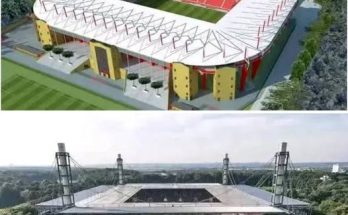The Denver Broncos are reportedly on the brink of a transformative move that could alter the trajectory of football in Colorado for decades to come. According to sources close to the organization, Broncos owner Rob Walton is spearheading efforts to construct a state-of-the-art indoor stadium equipped with a retractable roof—an ambitious project that, if realized, would not only reshape the team’s future but redefine Denver’s place in the national sports landscape. It’s a bold vision rooted in innovation, economic impact, and a burning desire to modernize the franchise into one of the NFL’s premier destinations for both fans and marquee events.
The proposed stadium, which would likely replace Empower Field at Mile High, represents a massive financial undertaking that only someone of Walton’s wealth and stature could confidently attempt. As one of the wealthiest owners in professional sports, Rob Walton—heir to the Walmart fortune—has the resources, influence, and long-term commitment needed to pursue a project of this magnitude. The price tag could reportedly soar well beyond $2 billion, depending on the final design, location, and accompanying infrastructure plans. For Walton and his ownership group, this is not just about building a football stadium—it’s about cementing Denver as a world-class sports city capable of hosting Super Bowls, Final Fours, major concerts, and even international events like the FIFA World Cup or Olympic competitions.
Insiders describe Walton’s stadium vision as a “game-changer,” and early renderings discussed among stakeholders include futuristic amenities such as 360-degree video boards, luxury suites that rival five-star hotel rooms, a fan plaza with climate-controlled zones, and interactive technology experiences tailored for the next generation of fans. The retractable roof is considered a must, providing year-round flexibility for events regardless of Colorado’s unpredictable weather. This would mark a dramatic shift from Empower Field’s open-air design, which while beloved for its iconic views and rowdy atmosphere, has become increasingly outdated in comparison to newer, domed stadiums in cities like Los Angeles, Las Vegas, and Minneapolis.
The timing of these discussions comes as stadium upgrades and relocations continue to trend across the NFL. Teams are racing to modernize their facilities, and the league is increasingly prioritizing cities that can provide dome stadiums or retractable-roof venues to host major events. Super Bowls, for example, are now largely awarded to cities that can guarantee good weather or offer climate-controlled stadiums. Walton knows that if Denver wants to enter that elite circle—hosting a Super Bowl, NCAA Final Four, or College Football Playoff National Championship—the city must meet the highest standards. That’s where this new stadium fits in.
Beyond the glitz and glamour of big-time events, a new stadium would signal a major commitment to player health and performance as well. Teams across the league are emphasizing the importance of modern facilities not only for gameday but also for training, recovery, and overall player development. A new Broncos stadium would likely include top-tier locker rooms, medical and rehab centers, and training facilities integrated into the complex. This kind of investment sends a clear message to players, coaches, and agents: the Broncos are serious about winning and building a championship-caliber culture.
The fan experience would also take a giant leap forward. Today’s sports fans expect more than just a game—they crave an immersive entertainment experience. With digital ticketing, mobile ordering, virtual reality zones, and customizable seating options, the stadium could become a fan-first paradise. Everything from parking to postgame entertainment would be reimagined. There’s even talk of integrating surrounding developments that include shopping, restaurants, hotels, and housing—essentially building a sports and entertainment district around the stadium that brings in year-round foot traffic and boosts the local economy.
Of course, a project of this scale comes with questions. Who will pay for it? Where will it be located? How will the community respond? Early indications suggest that Walton is committed to privately funding a large portion of the stadium to avoid the public backlash that has sometimes accompanied taxpayer-funded venues. That said, public-private partnerships remain a possibility, especially when considering the infrastructure needs—roads, transit, utilities, etc.—required for a facility of this size. Several sites are reportedly being considered, including locations closer to Denver International Airport or within major redevelopment zones near downtown.
City officials, while not confirming any specifics, have expressed support for the idea in principle. The economic benefits of hosting a Super Bowl alone could be staggering, with estimates from other host cities suggesting anywhere from $300 to $500 million in total impact. Multiply that by regular-season games, playoff contests, concerts, and conventions, and the stadium quickly becomes more than just a sports venue—it’s a multi-billion-dollar engine for growth.
The Broncos fan base, one of the most passionate and loyal in the NFL, has shown a mix of excitement and skepticism. On one hand, there’s the thrill of entering a new era, with the potential to host the world’s biggest events and attract top-tier talent. On the other, there’s nostalgia for Mile High Stadium and its legacy—a place that has witnessed some of the most iconic moments in NFL history. Balancing the emotional connection to the past with the practical need for progress will be a key part of the narrative moving forward. The ownership group is reportedly sensitive to this, and early concepts include tributes to the team’s history, possibly with a museum, Hall of Fame exhibits, or architectural elements that honor the Broncos’ storied legacy.
The NFL has taken notice as well. Commissioner Roger Goodell has long pushed for stadium innovation and has praised owners willing to invest in cutting-edge facilities. The league office would almost certainly support a Denver bid for a future Super Bowl or marquee event if a new indoor stadium were approved and under construction. That kind of endorsement could add significant momentum to the proposal and galvanize support from business leaders, investors, and political officials across the state.
If Walton’s plan comes to fruition, Denver could become one of the few cities in the United States capable of hosting all of the country’s top sporting events under one roof. The Super Bowl. The Final Four. The College Football Playoff. The NFL Draft. The NBA All-Star Game. Major boxing or UFC bouts. Even Taylor Swift concerts or WrestleMania could be in play. That level of versatility is rare and valuable, especially in an era when cities are competing more fiercely than ever for limited opportunities to host global events.
In the bigger picture, the Broncos’ stadium project could spark a ripple effect across Denver and beyond. New transit projects. Real estate development. Job creation. Tourism boosts. Revitalization of underused urban spaces. The city’s skyline and economic identity could be forever changed. There’s also the impact on other Denver sports franchises—the Nuggets, Avalanche, and Rockies could see increased synergy, collaboration, or even pressure to improve their own facilities and fan experience. In essence, this move could raise the bar for everyone.
For Walton, who purchased the team in 2022 for a then-record $4.65 billion, this is about legacy. It’s about setting the standard not just for the Broncos, but for the NFL as a whole. Owning a football team isn’t just about wins and losses—it’s about leaving a lasting mark on the game, the city, and the fans who bleed orange and blue. With this stadium, Walton is attempting to build something that outlasts careers, contracts, and even championships. He’s building a destination.
While the final green light has yet to be given, the groundwork is being laid. Conversations are happening. Feasibility studies are underway. Quiet land acquisitions may already be in progress. If and when Walton formally unveils his plan to the public, it will likely come with massive fanfare and a strategic rollout designed to build consensus. Until then, Broncos fans and the city of Denver will wait with cautious optimism, knowing that the future of football in their city could be on the verge of something truly spectacular.



